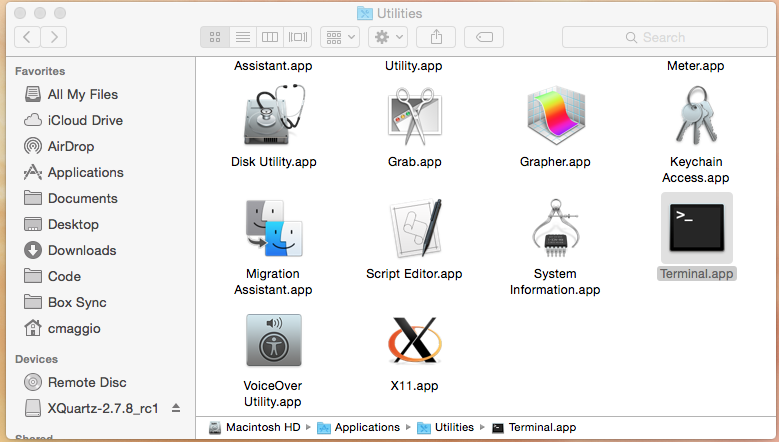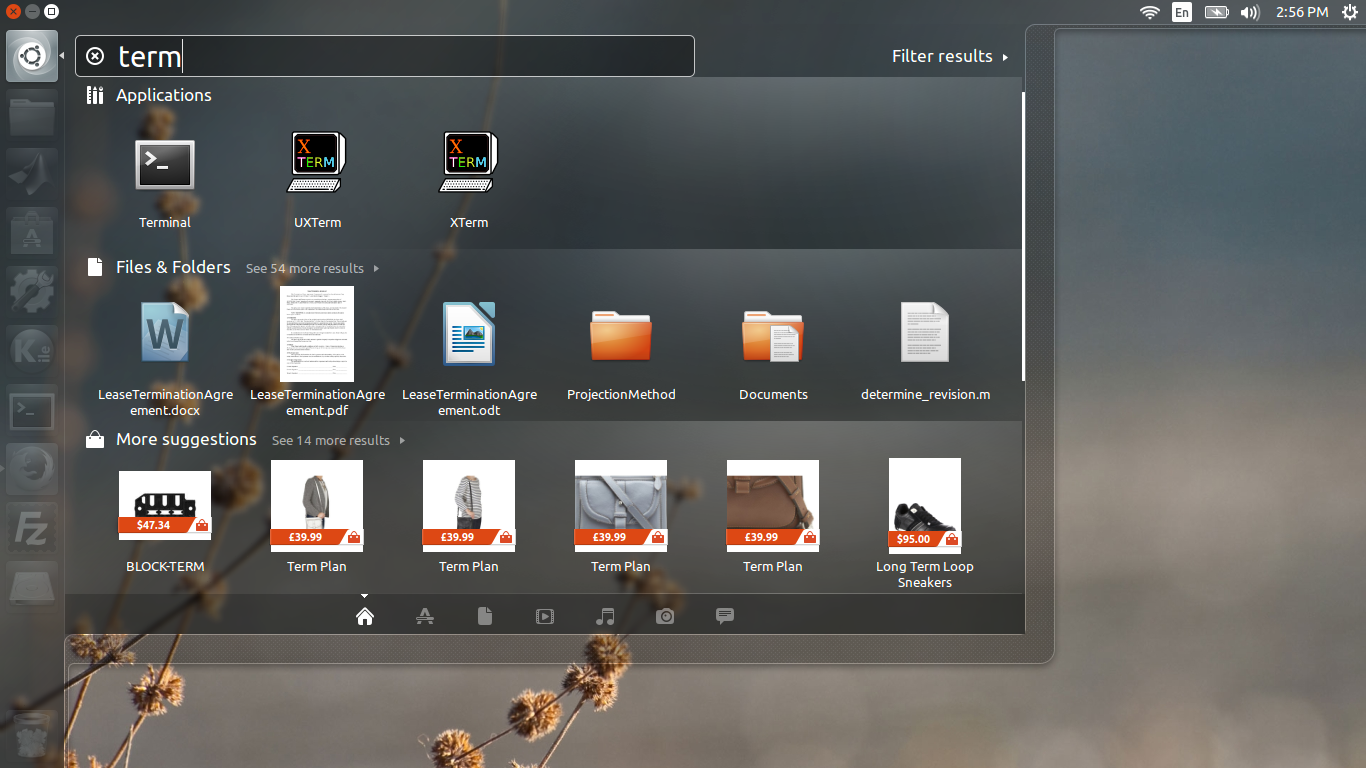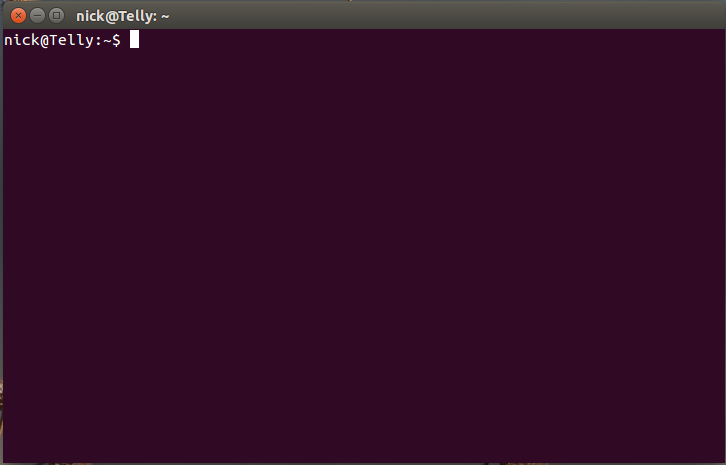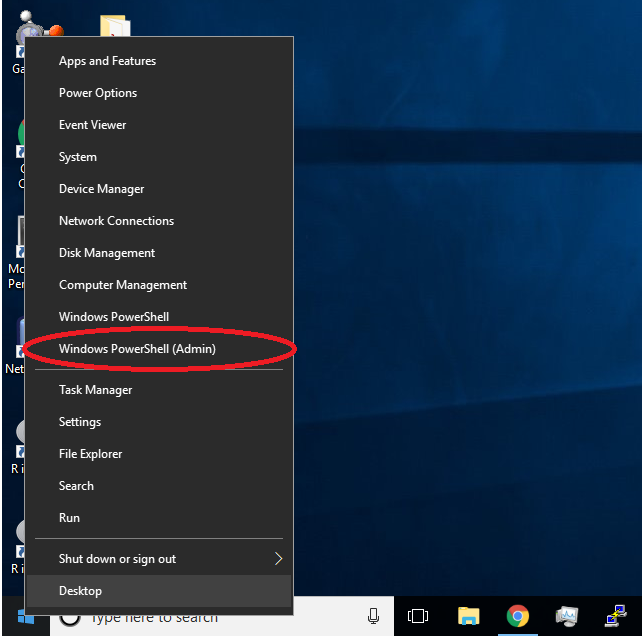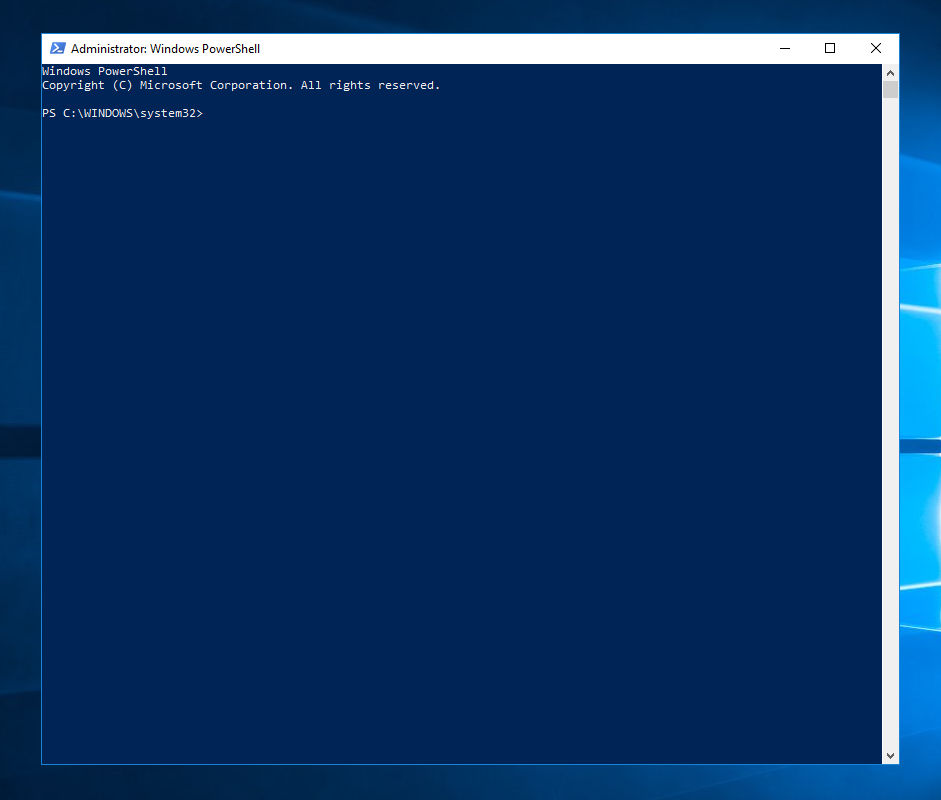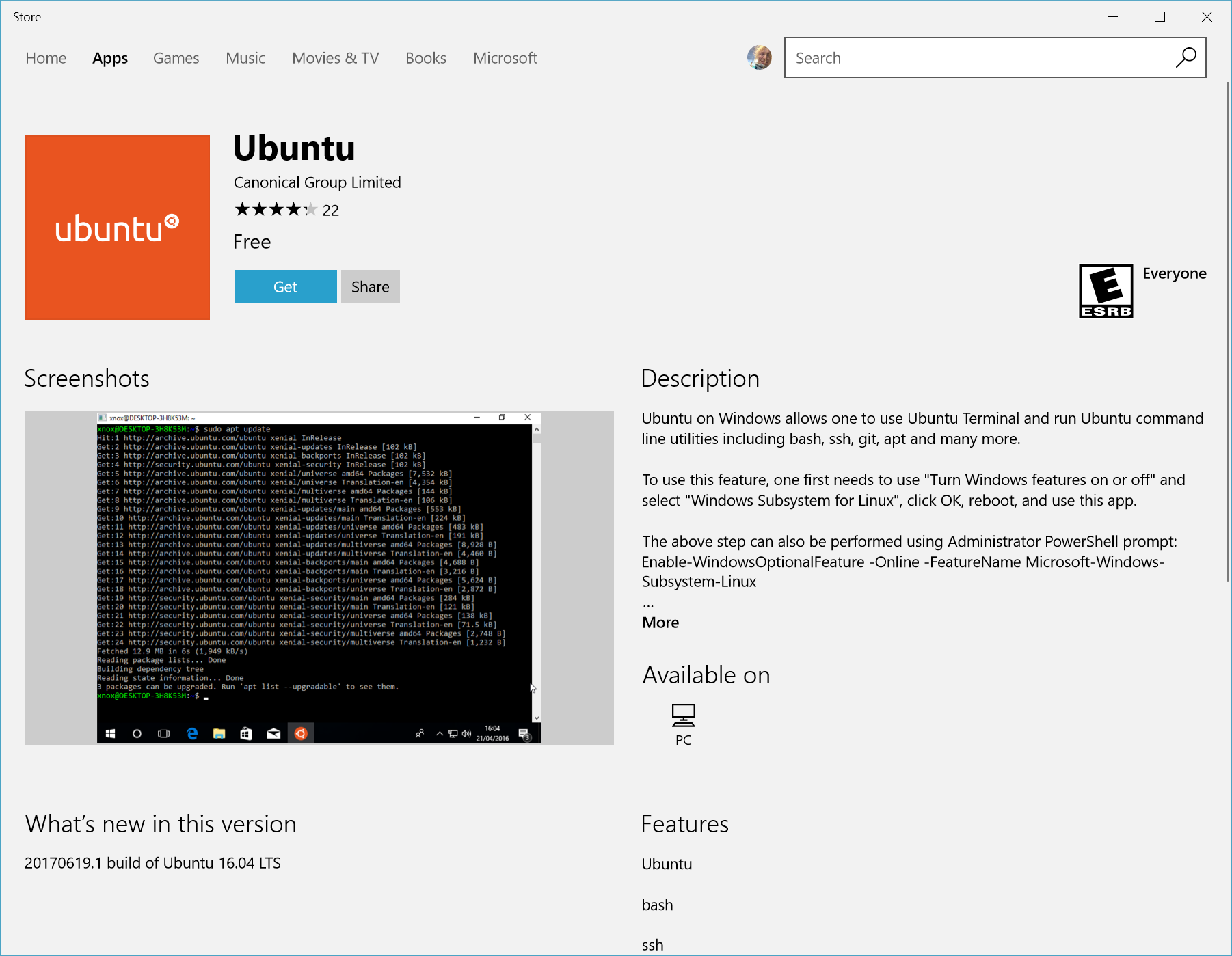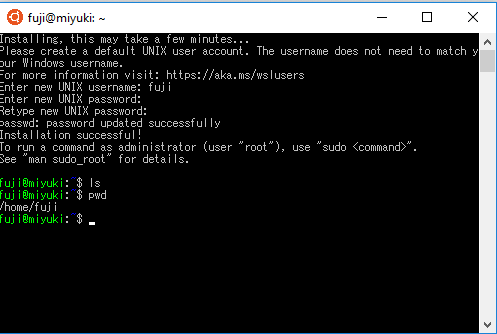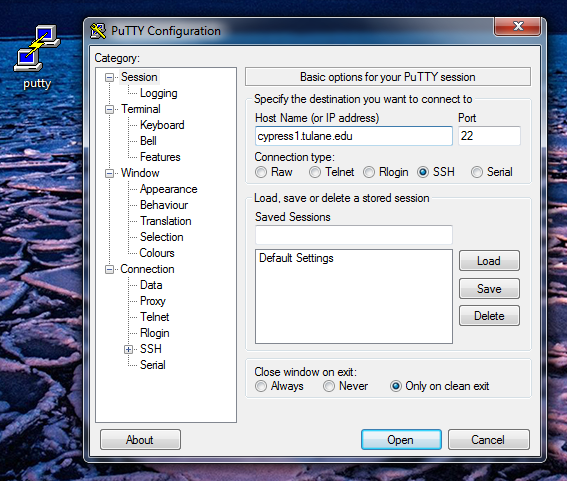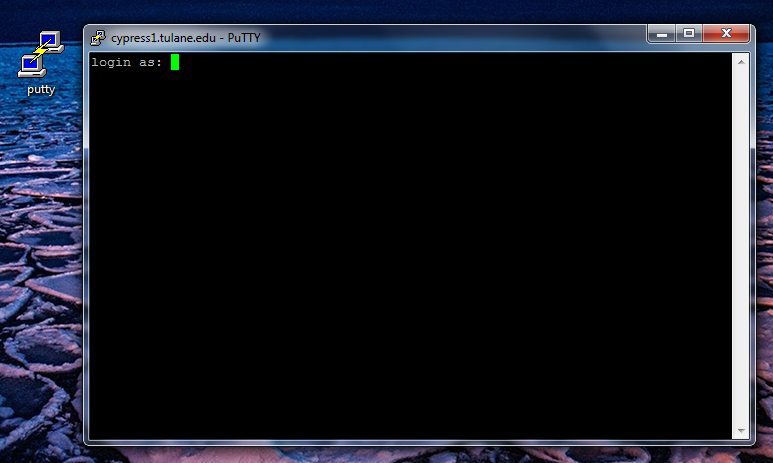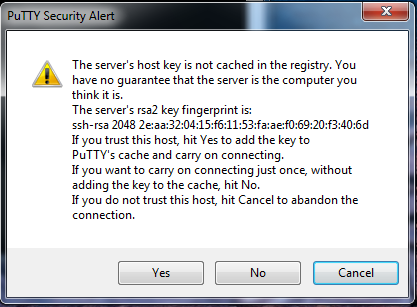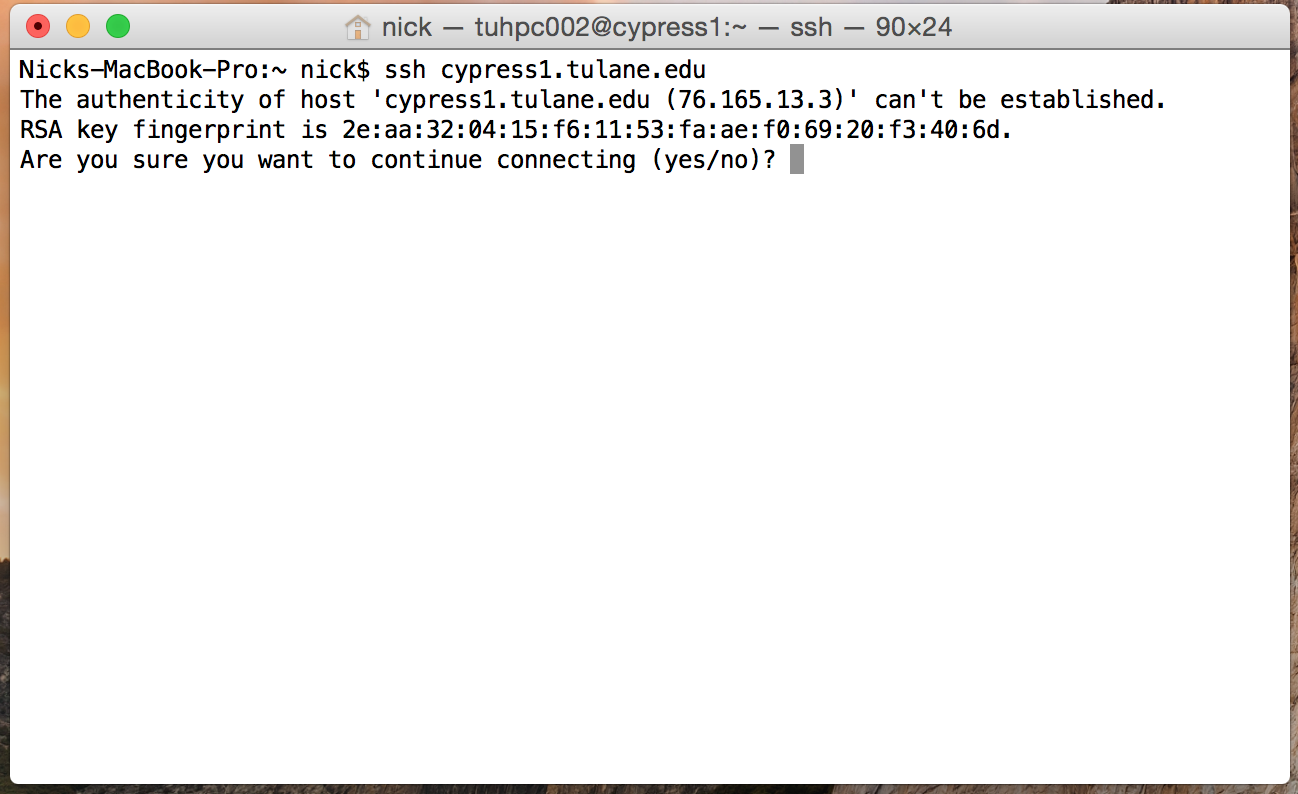Terminals and Shells
Taken from UNIVAC promotional materials circa 1960
The terminal has been the primary means of interfacing with a cluster computing machine since the 1960s. Today, users who are working on a laptop or desktop with an operating system that is based on Unix will have a useful terminal built into their operating system. This includes anyone using Mac os X or any flavor of Linux.
Mac Terminal
To access the terminal program on a Mac go to
Applications → Utilities → Terminal
This will launch a terminal containing a UNIX shell. The UNIX shell is a command line interpreter which both allows you to pass commands to the operating system and displays output. Currently, the default shell for most unix-based systems is the Bourne Again SHell or bash shell. Your shell can be modified to provide a custom environment and we will go into detail on how to make these modifications in later sessions.
Ubuntu Terminal
In Unity versions of Ubuntu (11.04 and later) the easiest way to access the terminal is through the search function of the dash
Dash → Search for Terminal
Windows "Terminal" (Command Prompt)
Evaluate your ssh installation
For the following, open a terminal window by locating the Windows search box in the taskbar at the bottom of the screen and entering the command cmd.
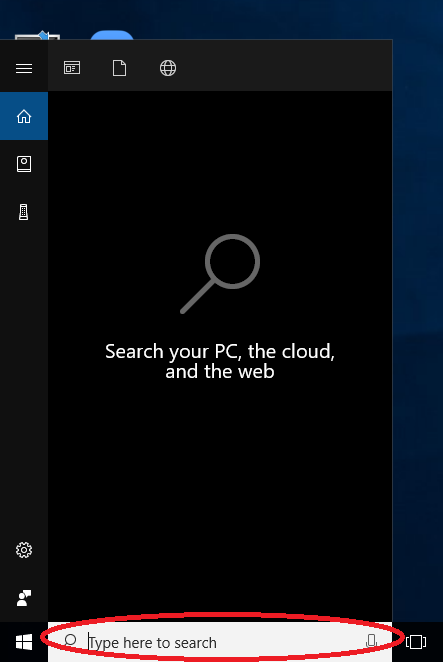 | 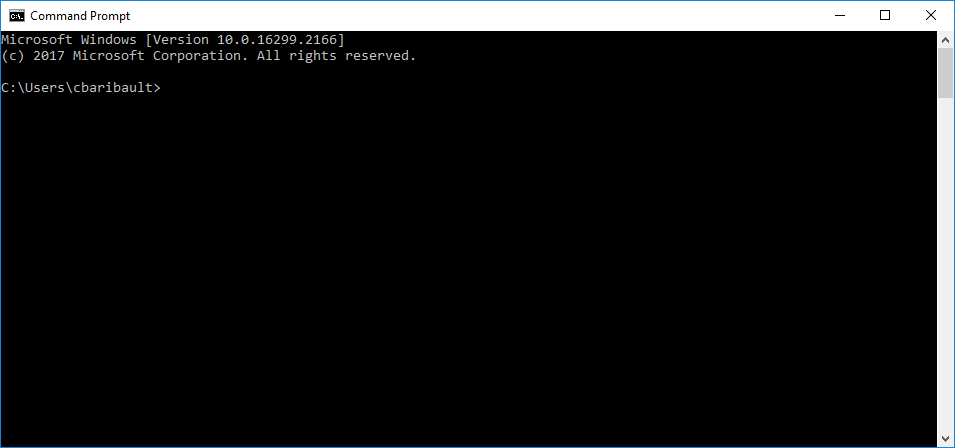
|
Check that ssh is installed by entering the command where ssh at the command prompt (user@localhost>) in your terminal window.
user@localhost> where ssh
If ssh is installed, then your result will look like the following.
C:\Users\user\ssh C:\Windows\System32\OpenSSH\ssh.exe
If per the above you have ssh installed, then you should still test that your version of ssh will work with Cypress, in which case you may still encounter an error. To test your installed ssh with Cypress, see the section Secure SHell (SSH) below.
Otherwise, if you encounter an unsuccessful result (for example if your result for where ssh above is "…Could not find…"), then proceed to the appropriate section below for your version of Windows.
Windows 11
Install OpenSSH
To install OpenSSH, see Install OpenSSH for Windows. Then verify ssh via Evaluate... above for use with Cypress.
Windows 10
Notice: End of support
As of October 14, 2025, support for Windows 10 has ended. See Microsoft notice with more information here .
For Tulane Assigned Workstations or Laptops
Tulane has been working for all users to run Windows 11 on the Tulane network. Any Tulane assigned device should be running Windows 11, and efforts have been long running to swap any device with a PC with hardware (TPM 2.0) that is up to the standard.
For Personal or User Provided Workstations or Laptops
For the time being, you may continue to login to Cypress using SSH - or SFTP such as in the case of FileZilla (see Graphical Software), but we acknowledge that eventually Windows 10 will not be able to join the Tulane network.
Update Options
If your Windows 10 does not have the ssh command or, for example, does not have the proper key exchange method mentioned above, then you can do one of the following.
- Download and run Windows 10 Update Assistant and then verify ssh via the above. See Download and run Windows 10 Update Assistant.
- See Install OpenSSH above (applies to Windows 10 as well) to install and verify ssh for use with Cypress.
- Proceed to the next section Check your OS build number to check your OS build number and, if applicable, install Windows Subsystem for Linux (WSL).
- Proceed to the section PuTTY below to install PuTTY.
Check your OS build number
To find your PC's architecture and Windows build number, go to the Windows search box and open Settings > System > About
If your windows 10 is newer than build 16215, you can install WSL with the instructions below. If your windows 10 is older than build 16215, you can still use PuTTY.
Installing Windows Subsystem for Linux (WSL)
1.Open PowerShell as Administrator by right-clicking on the start button and selecting the menu item Windows PowerShell (Admin)
2.In the resulting window run the command:
Enable-WindowsOptionalFeature -Online -FeatureName Microsoft-Windows-Subsystem-Linux
3.Restart your computer when prompted.
4.Let's install Ubuntu, click the link below.
From the distro's page, select "Get"
5.Open a command-line window, (search cmd) then type 'bash'
See Install WSL
X WIndow for Graphics
To run software with graphics with either Windows Terminal or WSL, you have to have X-window client software installed on your Windows. See here.
And you may need to do following on WSL terminal. Under bash command-line window
sudo apt install x11-apps
Add a line below into ~/.bashrc
export DISPLAY=localhost:0.0
Windows 8 (Do Not Use)
As of January 10, 2023, Windows 8.1 has reached the end of support and will no longer receive security updates, non-security updates, bug fixes, technical support, or online technical content updates. Thus your use of Windows 8 represents a security risk. See Windows 8 End of support.
Windows 7 (Do Not Use)
As of January 14, 2020, if you're still using Windows 7, this represents a critical security threat to the university network and user data, and your network access will be restricted to internet traffic only. Thus you'll be prevented from logging in to Cypress. For alternatives, see Reminder: Windows 7 End of Life.
PuTTY
After you've downloaded the PuTTY.exe file, move it to the location you prefer and double click to launch.
To log onto cypress, enter cypress1.tulane.edu (or cypress2.tulane.edu) into the Host Name field and make sure the port is set to 22. Click on Open and you will be given a login window to cypress.
Remote Access
A short History
Scientists have been performing computations remotely since 1940 when George Stibitz used a Teletype machine to perform remote computations on a Complex Number Machine in New York City from the an AMS conference held at Dartmouth (http://history-computer.com/Internet/Dreamers/Stibitz.html). By 1973, standards were defined for a set of remote access protocols called Telnet which are still in use today. Subsequently (1983), the Berkley Software Distribution (BSD) Unix operating system instituted an alternative protocol called Remote SHell, or rsh. While still available on most systems, rsh is not recommended for common use as it lacks encryption. In 1995, this lack of security lead a researcher named Tatu Ylonen to invent a secure set of protocols after his University was the victim of a sniffing attack. He named his protocols Secure SHell, or SSH, and this has become the default means of remote access for unix based machines world wide.
Secure SHell (SSH)
Linux, Mac, Windows 10, and WSL
Originally, only users on Mac and Linux workstations had ssh available on the command line. Afterwards, support for ssh was added to Windows 10 - initially via WSL (see WSL above) and then directly from the Windows terminal. To connect to a remote server run the following:
user@localhost> ssh remoteusername@remotehost.example.com
The first time you log into a new machine, you will be asked if you trust the server. For instance, the first time you log into Cypress using PuTTY you will receive the following prompt:
Click on yes (or if using Mac/Linux/Windows/WSL terminal simply type "yes" at the corresponding prompt). You should now be prompted for the password associated with your remote username.
For those who have accounts on Cypress, you can connect to cypress by running the command
user@localhost> ssh tulaneID@cypress.tulane.edu
and, at the prompt for password, entering the password associated with your tulaneID across Tulane resources.
user@localhost> ssh tulaneID@cypress.tulane.edu tulaneId@cypress.tulane.edu's password: Last login: Mon Mar 29 11:14:39 2021 from XXX.XX.XXX.XXX [tulaneId@cypress1 ~]$
After successful login, your current working directory on Cypress will be your home directory denoted by the tilde, ~. (See Storage: home directory.)
In Case Of Error: Unable to negotiate…no matching host key type found
If you encounter the error below:
user@localhost> $ssh userid@cypress.tulane.edu Error msg: Unable to negotiate with xx.xx.xx.xx port 22: no matching host key type found. Their offer: ssh-rsa,ssh-dss
Add the following lines to the file ~/.ssh/config on your local computer.
Host cypress.tulane.edu
HostName cypress.tulane.edu
HostKeyAlgorithms=+ssh-rsa,ssh-dss
PubkeyAcceptedKeyTypes=+ssh-rsa
If the file ~/.ssh/config doesn't exist yet on your local computer, you may need to first create the directory ~/.ssh and then create and edit the file ~/.ssh/config.
Also, be sure to enter exactly the same value for HostName in the file ~/.ssh/config as the hostname that you use in your ssh command.
On Linux, Mac, and WSL, if you prefer, you can do so using the command line in your terminal window via the following.
user@localhost> cd # change the current directory to your home directory as needed user@localhost> mkdir -p .ssh # create the subdirectory .ssh as needed user@localhost> cd .ssh # change to that subdirectory user@localhost> nano config # create, as needed, and edit and save the file named config.
For file editing with nano, etc., see File Editing Example.
In the case of nano, you can simply copy and paste the contents into the window and save the result.
For Windows terminal, you can open a window for notepad from the command line via the following.
C:\Users\user> cd &rem change directory to your home directory C:\Users\user> notepad .ssh\config
'notepad' may create .ssh/config.txt. If so, rename it with 'rename' command.
Again, be sure to enter exactly the same value for HostName in the file ~/.ssh/config as the hostname that you use in your ssh command.
Tunneling X Windows Session
Using SSH
The ssh command has a -Y option to support X window tunneling.
To connect to a remote server with X window tunneling run the following:
user@localhost> ssh -Y remoteusername@remotehost.example.com
Mac
For Mac users, you may have to install XQuartz.
Windows
Unless you are running one of the X window server programs mentioned below on your local machine, your attempts at opening and X11-based display window will continue to fail with an error message such as in the following example.
[tulaneId@cypress1 ~]$xterm connect 127.0.0.1 port 6000: Connection refused xterm Xt error: Can't open display: localhost:10.0 [tulaneId@cypress1 ~]$
All Windows users - whether using ssh or PuTTY - will need to download and install X window server/client software.
Using PuTTY
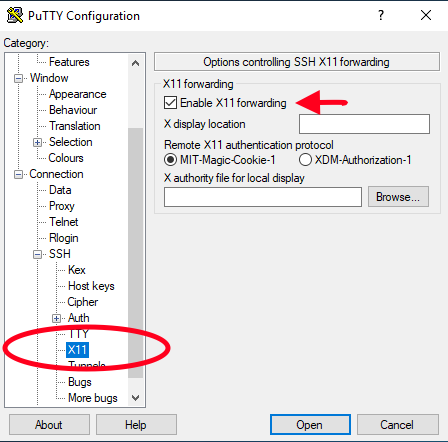 With PuTTY - in addition to X window server/client software mentioned above, enable X11 forwarding as shown.
With PuTTY - in addition to X window server/client software mentioned above, enable X11 forwarding as shown.
Using windows commadline prompt
C:\Users\uid>set DISPLAY=127.0.0.1:0.0 C:\Users\uid>ssh -Y uid@cypress.tulane.edu
CHECKPOINT
For Workshop
Everyone should now have a terminal open and be logged into Cypress. If you are not logged on to Cypress, please raise your hand and someone will assist you.
In General
Once you have a terminal, if you are not logged on to Cypress, please request help via Cypress HPC Consultation and someone will assist you.
We will return to SSH shortly, but first we need to discuss Basic Linux Commands.
Attachments (15)
- univac_1965_2.jpg (51.5 KB ) - added by 10 years ago.
- utilities_terminal.png (137.5 KB ) - added by 10 years ago.
- terminal.png (33.4 KB ) - added by 10 years ago.
-
terminal2.png
(13.3 KB
) - added by 10 years ago.
ubuntu terminal
-
ubuntu_terminal.png
(645.9 KB
) - added by 10 years ago.
finding the ubuntu terminal
-
PuTTY_launch.png
(228.3 KB
) - added by 10 years ago.
windows putty launch
-
PuTTY.png
(186.6 KB
) - added by 10 years ago.
putty screen
-
host_key.png
(48.4 KB
) - added by 10 years ago.
host key alert
-
host_key_mac.png
(148.5 KB
) - added by 10 years ago.
host key security for mac
- setWSL.png (14.5 KB ) - added by 7 years ago.
-
powerShell.png
(84.9 KB
) - added by 6 years ago.
Windows10 PowerShell
-
startContextMenu.png
(109.6 KB
) - added by 6 years ago.
Windows10 Start context menu
- puttyX11.png (36.9 KB ) - added by 6 years ago.
-
WindowsSearchBox.png
(24.4 KB
) - added by 5 years ago.
Windows Search Box
-
WindowsCommandPrompt.png
(7.4 KB
) - added by 5 years ago.
Windows Command Prompt
Download all attachments as: .zip


